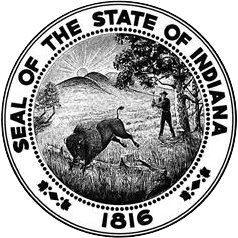The Indiana Department of Education's Office of Special Education is committed to supporting each student's individual needs. In Indiana, all students are held to high expectations and have access to educational opportunities that enrich their lives and prepare them for future success.
The growth and development of a child is significant during the early years of their life, and we know the foundations for a child’s future successes are built through interactions with others and the environment surrounding them. Indiana provides a robust, academically enriched learning environment for our students and has implemented a wide range of early childhood programs within our schools: developmental preschool, Head Start, licensed childcare centers, licensed family childcare homes, public community preschools, Title I preschools, and unlicensed registered ministries.
The Indiana Department of Education's Office of Special Education works very closely with the Family and Social Services Administration’s Office of Early Childhood and Out-of-School Learning to ensure each student with an Individualized Education Program receives a Free and Appropriate Public Education (FAPE) through coordinated efforts across all preschool settings based on the individual student’s needs.
Parent Resources
SPP/APR Indicators
- Indicator 6
- Summary
- A regular early childhood (EC) program and receiving the majority of special education and related services in the regular EC program.
- A separate special education class/separate school/residential facility, or
- In the home.
- Goal
- Resources
A results indicator that measures the percentage of preschool children with IEPs attending:
The goal of Indicator 6 is to provide services to preschoolers with IEPs inside the general education environment to the maximum extent that is appropriate.
- Indicator 7
- Summary
- Positive social-emotional skills (including social relationships),
- Acquisition and use of knowledge and skills, and
- Use of appropriate behaviors to meet their needs.
- Goal
A results indicator that measures the percentage of preschool children aged 3 through 5 with IEPs who demonstrate improved:
- The goal of Indicator 7 is to substantially increase the rate of growth of preschool students with IEPs by the time they turn 6 years of age or exit the program.
- Resources
- Indicator 12
- Summary
- Goal
The goal of Indicator 12 is to ensure seamless transitions for children and families as they move from IDEA Part C to IDEA Part B so they can access appropriate services by their third birthdays.
A compliance indicator that measures the percentage of children referred by Part C prior to age 3, who are found eligible for Part B, and who have an IEP developed and implemented by their third birthdays.
